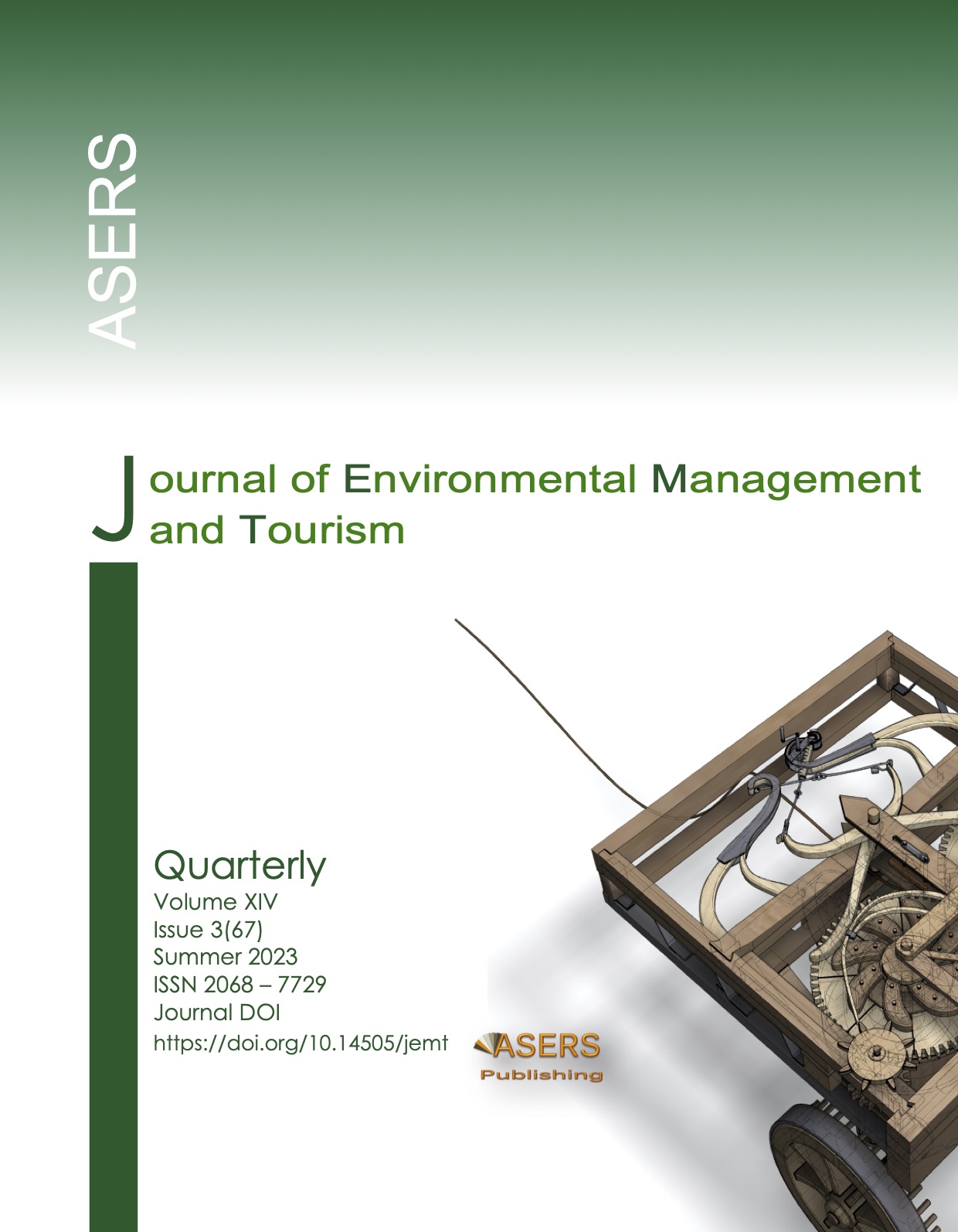A Sustainable Dairy Industry in Kazakhstan. Enterprises’ Insights Upon Environment Management and Innovation
Abstract
This research paper debates some issues concerning a sustainable dairy industry in Kazakhstan in straight relation with environment management and innovation management. The qualitative and quantitative growth of the dairy industry, the production of milk and dairy products, increasing the profitability of production is based on the active use of the innovative component. Environmental factors and other issues as profitability decrease of production, the risks of not mastering innovations make this industry subsidized and unattractive for attracting investment. In order to assure the sustainable functioning of the dairy industry, mechanisms are needed to improve the implementation of priority areas for its innovative development, to ensure a decrease in the volume of imports of dairy products. The active use of environmentally friendly technologies that reduce the negative impact on soil and water, as well as technologies and infrastructure for the disposal of animal by-products, should become the basis for the sustainable development of the dairy industry.
References
[2] Aimurzina, B. T., Kamenova, M., and Omarova, A. 2019. Current state and development forecast of dairy market. Journal of Environmental Management and Tourism, 5(37): 1134-1145. DOI:https://doi.org/10.14505/jemt.v10.5(37).20
[3] Aimurzina, B. T., Кamenova, M., and Omarova, A. 2018. Methods of sustainable regulation of agricultural enterprises at the present stage. Journal of Environmental Management and Tourism, 5(29): 1101-1108. DOI:https://doi.org/14505/jemt.v9.5(29).23
[4] Alekseev, S. A. 2018. The need to develop a national scheme of agricultural production in the context of its development in the EAEU. International Scientific and Practical Conference on Agrarian Economy in the Era of Globalization and Integration (AGEGI-2018), 274(1): 012027.
[5] Anciferova, О. Y. 2018. Formation of the development strategy of the agro-industrial complex of the Tambov region on the basis of the scenario approach. The International Scientific Conference, IOP Conference Series: Earth and Environmental Science. Moscow. DOI: https://doi.org/10.1051/e3sconf /2019910
[6] Augustin, M. A., Udabage, P., Juliano, P., and Clarke, P. T. 2018. Towards a more sustainable dairy industry: Integration across the farm - factory interface and the dairy factory of the future. International Dairy Journal, 31(1): 2-11. DOI: https://doi.org/10.1016/j.idairyj.2017.03.009
[7] Bourlakis, M., Maglaras, G., Gallear, D., and Fotopoulos, Ch. 2019. Examining sustainability performance in the supply chain: The case of the Greek dairy sector. Industrial Marketing Management, 43(1): 56-66. DOI:https://doi.org/10.1016/j.indmarman.2018.08.002
[8] Ellis, J., et al. 2020. Analysis of closed versus operating dairies in the southeastern United States. Journal of Dairy Science, 103(6): 5148-5161. DOI: https://doi.org/10.3168/jds.2019-17516
[9] Else, T., Choudhary, S., and Genovese, A. 2022. Uncovering sustainability storylines from dairy supply chain discourse. Journal of Business Research, 142: 858-874. DOI: https://doi.org/10.1016/j.jbusres.2021.12.023
[10] Feil, A. A., Schreiber, D., and Haetinger, C. 2020. Sustainability in the dairy industry: A systematic literature review. Environmental Science and Pollution Research, 27: 33527–33542. DOI:https://doi.org/10.1007/s11356-020-09316-9
[11] Glavas, A., and Fitzgerald, E. 2020. The process of voluntary radical change for corporate social responsibility: The case of the dairy industry. Journal of Business Research, 110: 184-201. DOI:https://doi.org/10.1016/j.jbusres.2020.01.021
[12] Gorton, M., et al. 2019. Power, buyer trustworthiness and supplier performance: Evidence from the Armenian dairy sector. Industrial Marketing Management, 50: 69-77. DOI:https://doi.org/10.1016/j.indmarman.2018.05.024
[13] Granato, D., Carocho, M., Barros, L., and Zabetakis, I. 2022. Implementation of sustainable development goals in the dairy sector: Perspectives on the use of agro-industrial side-streams to design functional foods. Trends in Food Science & Technology, 124: 128-139. DOI: https://doi.org/10.1016/j.tifs.2022.04.009
[14] Keyserlingk, M. A. G., et al. 2019. Sustainability of the US dairy industry. Journal of Dairy Science, 96(9): 5405-5425. DOI: https://doi.org/10.3168/jds.2018-6354
[15] Lindena, T., and Hess, S. 2022. Is animal welfare better on smaller dairy farms? Evidence from 3,085 dairy farms in Germany. Journal of Dairy Science, 105(11). DOI: https://doi.org/10.3168/jds.2022-21906
[16] Martinelli, R.R., et al. 2022. Journal of Co-operative Organization and Management, 10(2): 100183. DOI:https://doi.org/10.1016/j.jcom.2022.100183
[17] Nechitaylov, A. 2019. Features of the market infrastructure of environmentally safe milk. International Scientific and Practical Conference on Agrarian Economy in the Era of Globalization and Integration (AGEGI-2018). Moscow, Russian Federation. DOI: https://doi.org/10.37984/2076-9288-2021-1
[18] Owusu-Sekyere, E., Scheepers, M. E., and Jordaan, H. 2018. Economic water productivities along the dairy value chain in South Africa: Implications for sustainable and economically efficient water-use policies in the dairy industry. Ecological Economics, 134: 22-28. DOI: https://doi.org/10.1016/j.ecolecon.2017.12.020
[19] Rubaeva, O., and Kachurina, E. 2020. Factors influencing the economic mechanism of the development of small and medium-sized dairy cattle breeding enterprises. E3S Web Conferences 176, 05015, International Scientific and Practical Conference “From Inertia to Develop: Research and Innovation Support to Agriculture” (IDSISA 2020). DOI: https://doi.org/10.1051/e3sconf /202017605015
[20] *** TPACEE-2018 6005
[21] *** Official resource of Statistics Committee of the Ministry of National Economy of the Republic of Kazakhstan. Available at: www.stat.gov.kz
[22] *** Methodology for calculating greenhouse gas emissions. 2014. Available at: www.ekolog.ucoz.kz
Copyright© 2025 The Author(s). Published by ASERS Publishing 2025. This is an open access article distributed under the terms of CC-BY 4.0 license.
